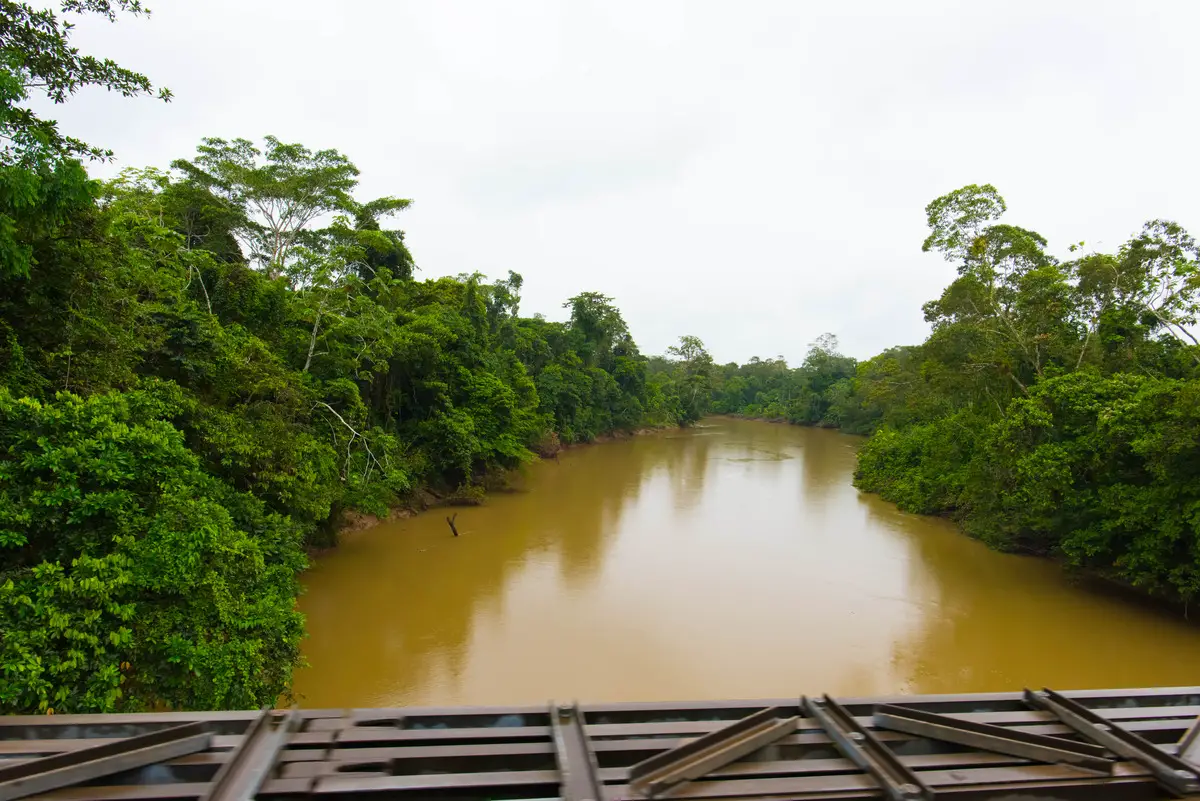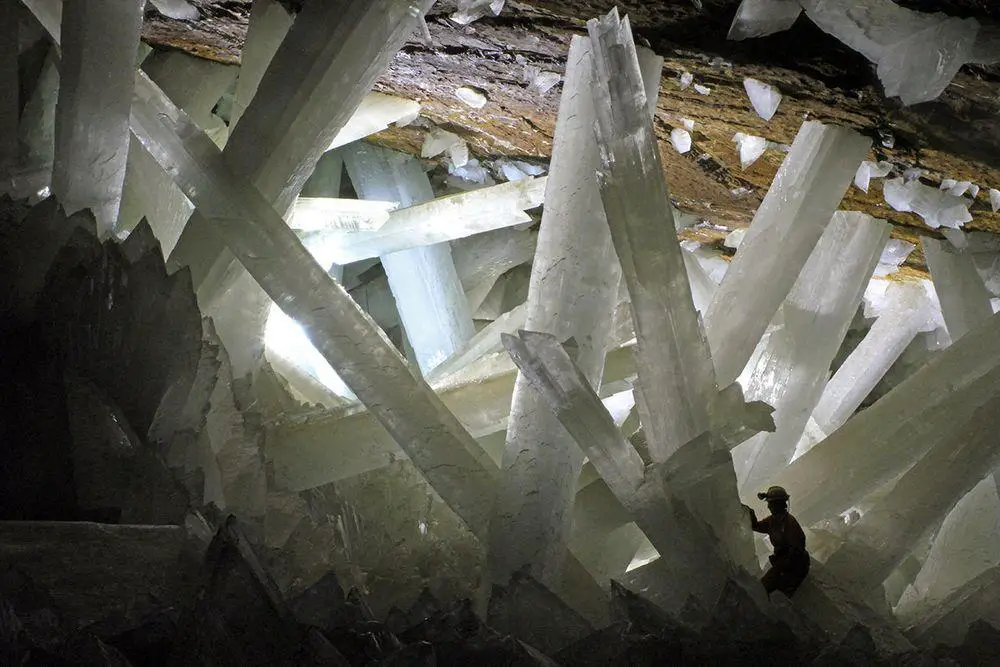World 🢖 Australia and Oceania 🢖 Australia 🢖 Christmas Island
Animal colonies 🢔 Ecosystems 🢔 Biological wonders 🢔 Categories of wonders
Wonder
Christmas Island crab forest
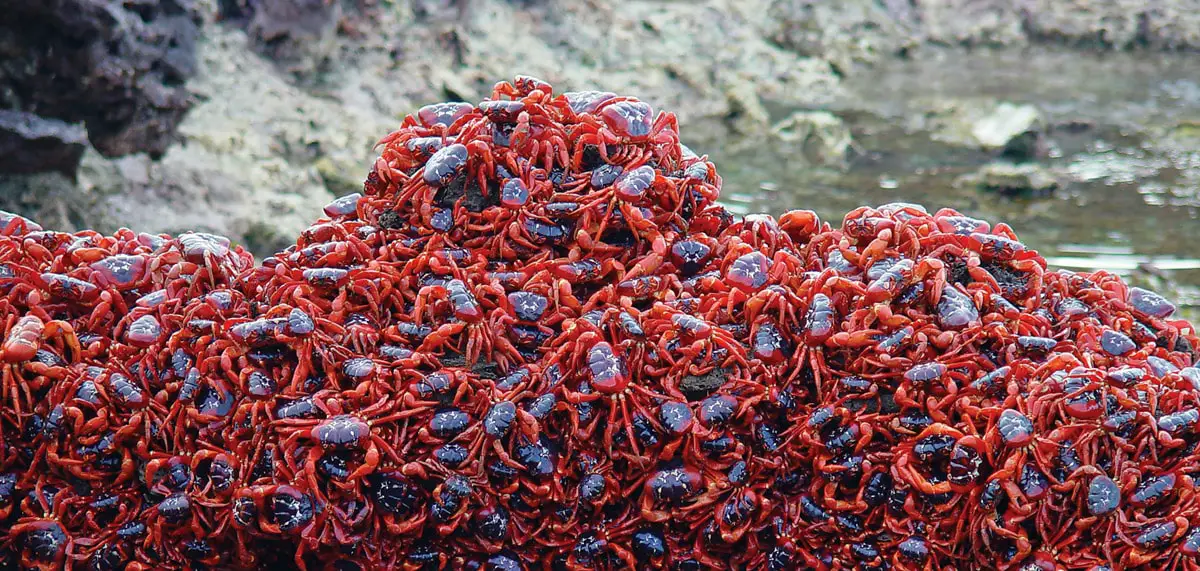
 In short
In short
Happily Christmas Island has not been heavily transformed by people and now represents a true wonder of nature. "Specialty" of this island is the unique Christmas Island crab forest – a rainforest governed by millions of crabs.
 57.3%
57.3%
GPS coordinates
Location, address
Area
Map of the site
If you see this after your page is loaded completely, leafletJS files are missing.
 In detail
In detail
Terraced rainforest
History of Christmas Island possibly started some 60 million years ago, when an undersea volcano raised above the surface of the ocean and a coral atoll formed around it, depositing limestone. Some 20 million years ago this mount and atoll started to sink slowly and corals busy worked to grow new layers of limestone in order to stay in shallow water.
Approximately 10 million years ago island – now covered with a thick limestone cap – started to rise up again. There were three uplifts – and these three uplifts formed several terraces around the island (sometimes merging into one terrace). The island rises 361 m above the ocean.
Nowadays the surface of Christmas Island is covered with rainforest – also the ancient terraces inside this forest are almost hidden in lush green vegetation. Island is surrounded by deep waters and life on this island for millions of years has developed in isolation.
Thus the whole island represents a unique biotope. Some parts of this rainforest are especially unique – such as The Dales and Hosnies Spring which are reviewed as separate landmarks by Wondermondo.
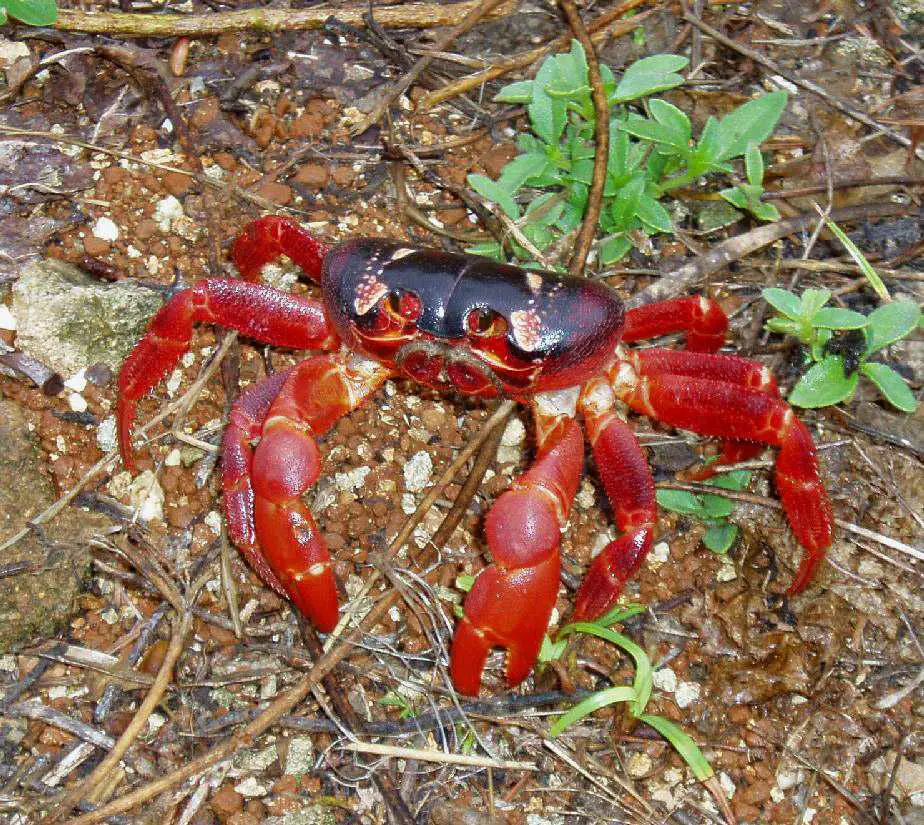
Phosphates and space flight
Although a major part of the island is covered with primeval forest, in many locations there were mined phosphates, and built roads, and the forest has been transversed by straight tracks. Rich deposits of phosphates were discovered in 1887 and in 1899 started phosphate mining and it continues since then. But nowadays there is not allowed to clear any more rainforest for mining operations.
In 2001 Australian – Russian consortium announced that there will be Asia Pacific Space Centre and by late 2003 the first launch of the space satellite will take place. It seemed that in this way Australia would play an active role in increasing Asian space activities.
Long and expensive environmental impact assessment procedure started (they wanted to use a major part of the unique island), gradually winding down the interest of investors.
Earlier, in 1980, there was established a national park which takes a major part of the island – 8,500 ha.
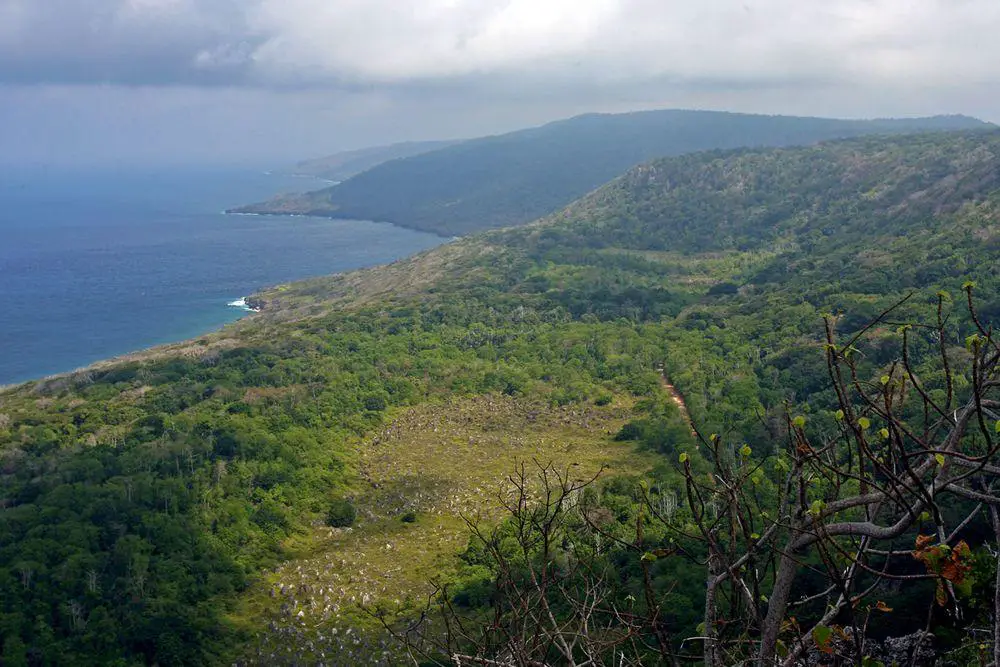
Land crabs
Rainforest of Christmas Island has the highest diversity of land crabs in the world. Crabs in many ways are the dominating animals on this island and there is no other forest in the world with crabs as dominating species.
In total there are known some 20 species of land crabs besides some 160 species of "common" crabs living in reefs and shallows around the island. Land crabs have evolved from sea crabs and are living either on a beach, in freshwater streams, or in the shade of rainforest. Especially unusual is the latest – these crabs are scavenging the ground of rainforest looking for fallen leaves, fruits, and saplings. Their droppings serve as fertilizer, burrowings aerate the soil, and their feeding habits decide the build of forest structure.
Red crabs
Most famous crab of the island is Christmas Island red crab Gecarcoidea natalis – dominating animal species in forest, endemic species met only on this island.
In total on the island live 50 – 100 million of these crabs which represents an unprecedented density of land crabs in the world. As early settlers have not reported unusual numbers of these crabs, it is possible that their number increased after the extinction of its natural enemy – Maclear’s rat (Rattus macleari). In the 19th century, these rats were everywhere on the island but went extinct in the early 20th century after the invasion of black rats and epidemics.
One of the impressive sights not only for Christmas Island but for the whole world is the yearly migration of red crabs. It seems that migration takes place in the time when there is the least difference between low and high tides – then it is safer to lay eggs. Migration starts on the plateau and lasts up to 18 days. Crabs gather in broad columns and repeat the same route each year. They prefer to go in the early morning or late afternoon – to avoid direct sunlight. The biggest danger to them is direct sunlight and heat.
Latest crab migration was ongoing in late October – early December 2010.
To save the crabs, the roads have special crab crossings and plastic walls, funneling them to these crossings. But there is another deadly enemy – invasive Yellow Crazy Ant (Anoplolepis gracilipes). It is the main reason why the number of red crabs is decreasing, although numerous other species of introduced animals are changing the ecosystem too. Since 2000 there is ongoing extermination of the supercolonies of crazy ants all over the island, decreasing their number by 99%.

Other forest crabs
Many of the land crabs live near the sea, on beaches. But Christmas island has several more species of land crabs living in forests.
One more endemic species is Jackson’s crab (Sesarma jacksoni), living in lower terraces of forest and in caves.
On the island lives the world’s largest population (around 1 million) of robber crabs (Birgus latro) – the largest land invertebrate in the world, up to 40cm long.
In the forest can be found also purple crab (Gecarcoide lalandii) but it is more rare. Close to the seepages of springs in the forest can be found also purple crabs (Gecarcoide lalandii) – Christmas Island is the only place in the world where these crabs are blue. Other crabs in forest are little nipper (Geograpsus grayi), yellow nipper (Geograpsus crinipes), the rare white-stripe crab (Labaunium rotundatum).
Unique plants
On the island grow 135 native plant species. At least 18 are not found anywhere else in the world:
- Christmas Island Spleenwort (Asplenium listeri C.Chr.) – fern, rarely found on some inland cliffs. Less than 300 plants are known.
- Sage Orchid (Brachypeza archytas (Ridl.) Garay (1972)) – epiphytic orchid with white flowers, often found on trunks of large trees.
- Flickingeria nativitatis (Ridl.) J.J.Wood – epiphytic orchid with pale yellow flowers, that grows on trees.
- Phreatia listeri Rolfe – epiphytic orchid, growing on trees. Forms clumps, and has tiny, greenish-white flowers.
- Ridley’s Ground Orchid (Zeuxine exilis Ridl., 1906) – terrestrial orchid. Found once in 1904, was considered to be extinct but was rediscovered in 2009.
- Lister’s Palm (Arenga listeri Becc.) – growing on lower terraces closer to the sea.
- Pandanus elatus Ridl. – large tree, up to 20 m tall.
- Pandanus christmatensis Martelli – shrub and tree up to 10 m tall, grows closer to the sea forming thickets.
- Dendrocnide peltata var. murrayana (Rendle) Chew – subspecies of stinging tree. All parts of this tall tree are covered with stinging hairs and touching this plant is very painful.
- Lantern Flower (Abutilon listeri Baker f.) – shrub with nice flowers.
- Grewia insularis Ridl. – shrub or tree, growing on terraces in northern coast of island.
- Columbrina pedunculata Baker f. – shrub with yellow-green flowers.
- Christmas Island Waxvine (Hoya aldrichii Hemsl.) – vine, grows in terraces, closer to the sea. Beautiful, fragrant flowers.
- Zehneria alba Ridl. – small vine, up to 3 m long.
- Asystasia alba Ridl. – herb with white flowers.
- Dicliptera maclearii Hemsl. – herb with pink flowers, grows on lower terraces.
- Peperomia rosii Rendle ex Baker f. – epiphyte, found only once in 1898 and may be extinct now.
- Christmas Island Duch Beak (Ischaemum nativitatis Jansen ex Renvoize) – tall grass, found on some limestone pinnacles.
Unique birds
Island contains six endemic bird species and five subspecies. Endemic birds species are:
- Abbot’s Booby (Papasula abboti Ridgway, 1893). This large seabird occasionally can be met outside Christmas Island, but it lives only here. This large seabird is nesting only in the Christmas Island rainforest, in the central and northern parts of the island. Some 2,500 birds are remaining and the population might be decreasing. There is an ongoing program to protect the emergent trees with nests of boobies from turbulent winds by plantings.
- Christmas Frigatebird (Fregata andrewsi Mathews, 1914) – endangered bird, spending most of his active life in flight and rather often seen above the island, some 1,100 breeding pairs remain.
- Christmas Island Goshawk (Accipter natalis) – predators, curious forest birds.
- Christmas Island Imperial Pigeon (Ducula whartoni) – dark grey pigeons, common birds.
- Christmas Island Hawk Owl (Ninox natalis) – elusive owl, some 1,000 birds remaining.
- Christmas Island White-eye (Zosterops natalis) – originally only in Christmas Island but introduced also in Cocos Islands. A small bird, common.
Other unique animals
On the island are living two species of endemic reptiles and five species of endemic reptiles.
- Christmas Island Shrew (Crocidura trichura) – possibly extinct.
- Christmas Island Pipistrelle (Pipistrellus murrayi) – critically endangered bat, with rapidly decreasing population. Still discussed whether this is separate species.
- Lister’s gecko (Lepidodactylus listeri) – small lizard living on trees. It was considered to be extinct since 1987, but in 2009 there were found geckos in the far southwest. In the summer of 2010, there were 21 geckos.
- Christmas Island Blind Snake (Typhlops exocoeti) – snake, living in forest soil of the central plateau, last seen in 1986.
- Sadlier’s Bow-fingered Gecko (Cyrtodactylus sadlieri) – comparatively common lizard, often found behind bark of trees.
- Christmas Island Whiptail Skink (Emoia nativitatis).
- Blue-tailed Snake-eyed Skink (Cryptoblephanus egeriae) – nice lizard with bright blue tail, found only in the western part of island.
Only here is found butterfly – Christmas Emperor (Polyura andrewsi), mosquito Aedes andrewsi, stick insect Clitumnus stilpnoides, huntsman spider Heteropoda listeri and some other species of insects, spiders, snails.
References
- National Recovery Plan for Lister’s Gecko Lepidodactylus listeri and the Christmas Island Blind Snake Typhlops exocoeti prepared for the Department of the Environment and Heritage by Dr. Hal Cogger, 2006. Accessed 31.12.10.
- Christmas Island, Birth of the Island & Geology, ABC TV, Island Life. Accessed 01.01.11.
Christmas Island crab forest is included in the following articles:
 Linked articles
Linked articles
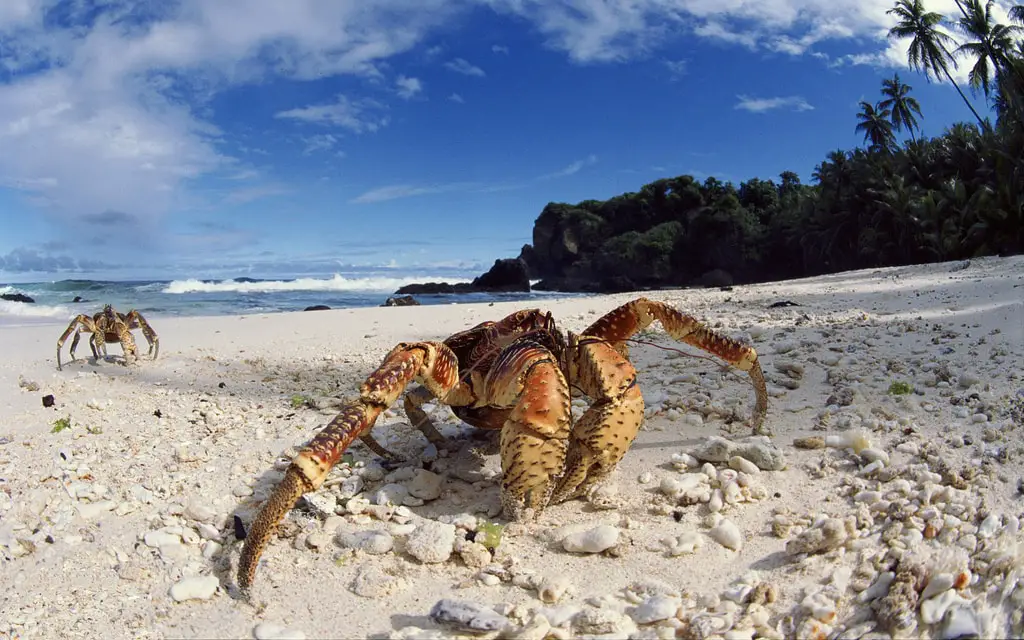
Wonders of Christmas Island
Highlights of Christmas island are its unique ecology and some interesting features of karst processes.
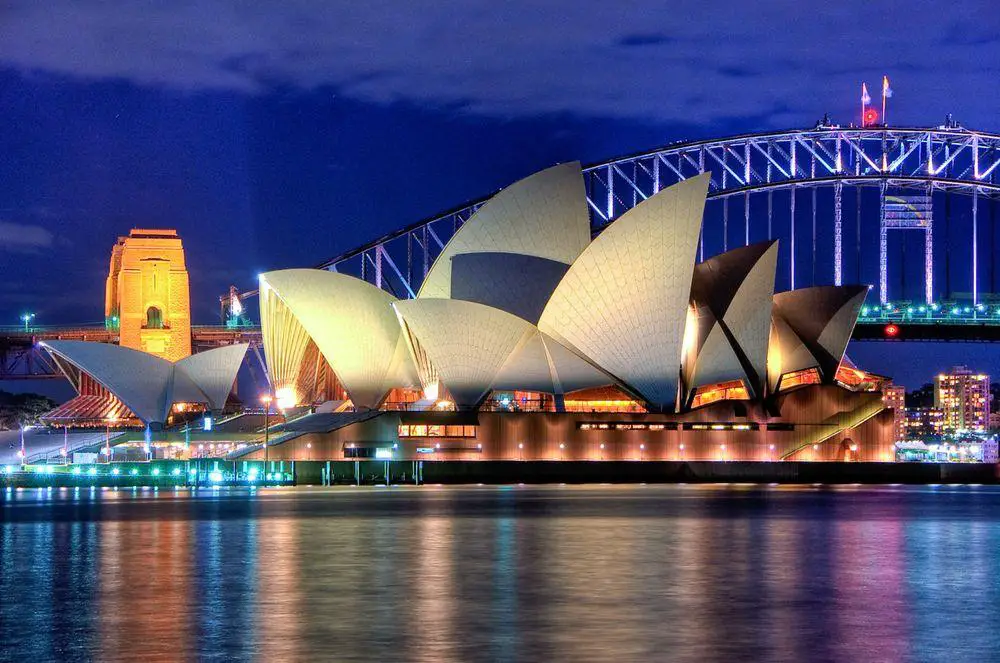
Wonders of Australia
The enormous and diverse area of Australia contains countless amazing and unique monuments. Parts of the country have not been thoroughly investigated and sometimes there are reported new, surprising finds.
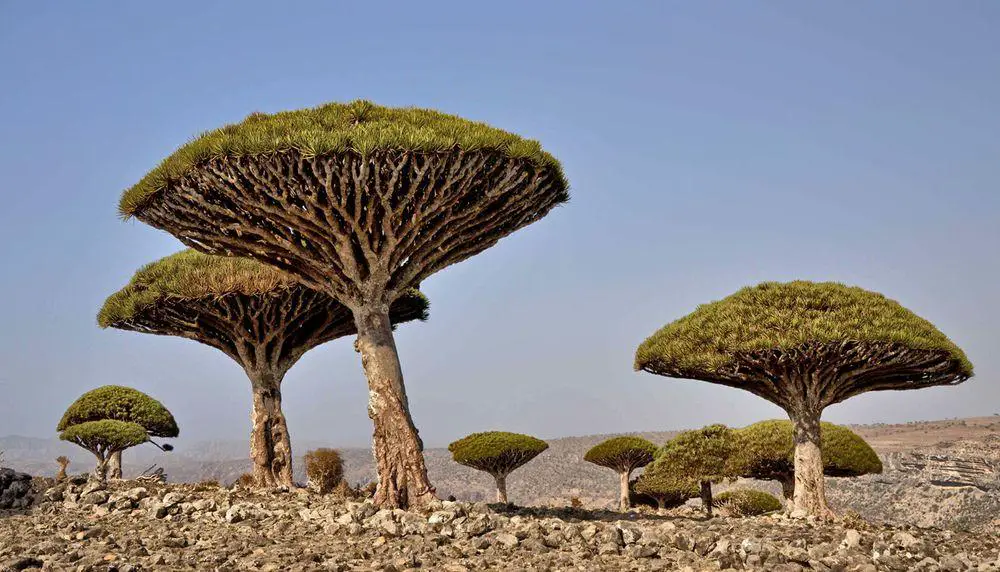
Ecosystems
Biotope is a rather small area with uniform environmental conditions and a specific community of life. Wondermondo describes biotopes and ecosystems which have striking looks, look very beautiful, or have other unusual characteristics.
 Recommended books
Recommended books
An Island Called Christmas
A romantic desert island… Who first saw and went ashore on Christmas Island will never be known. Where these people came from and when is conjecture though we are almost certain they were Polynesians.
When Crabs Cross the Sand
Few migrations are as visually stunning as that of the Christmas Island crab. Crawl alongside one particular crab as it makes its way to the water’s edge, and marvel at this small creature’s big, life-changing journey.

